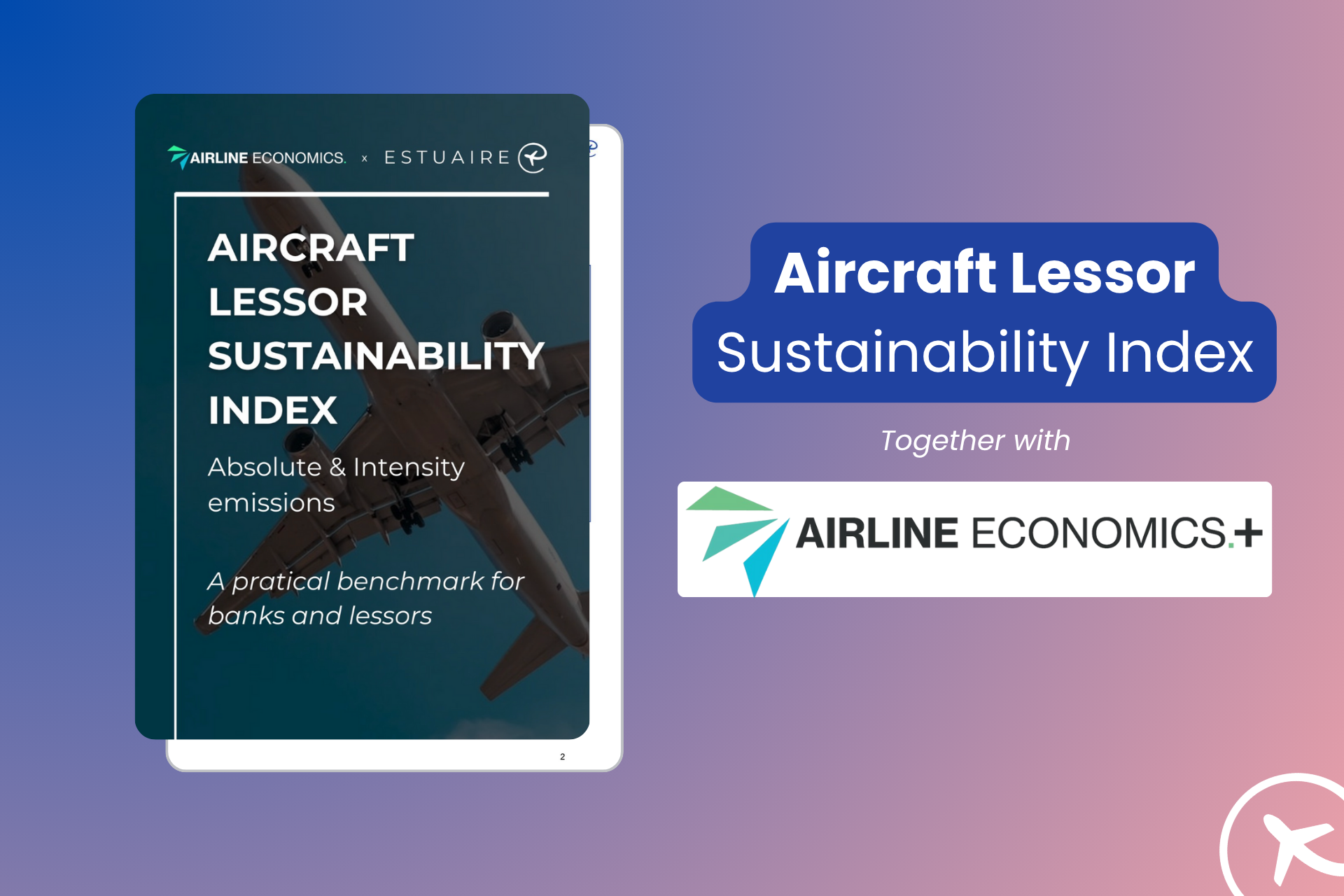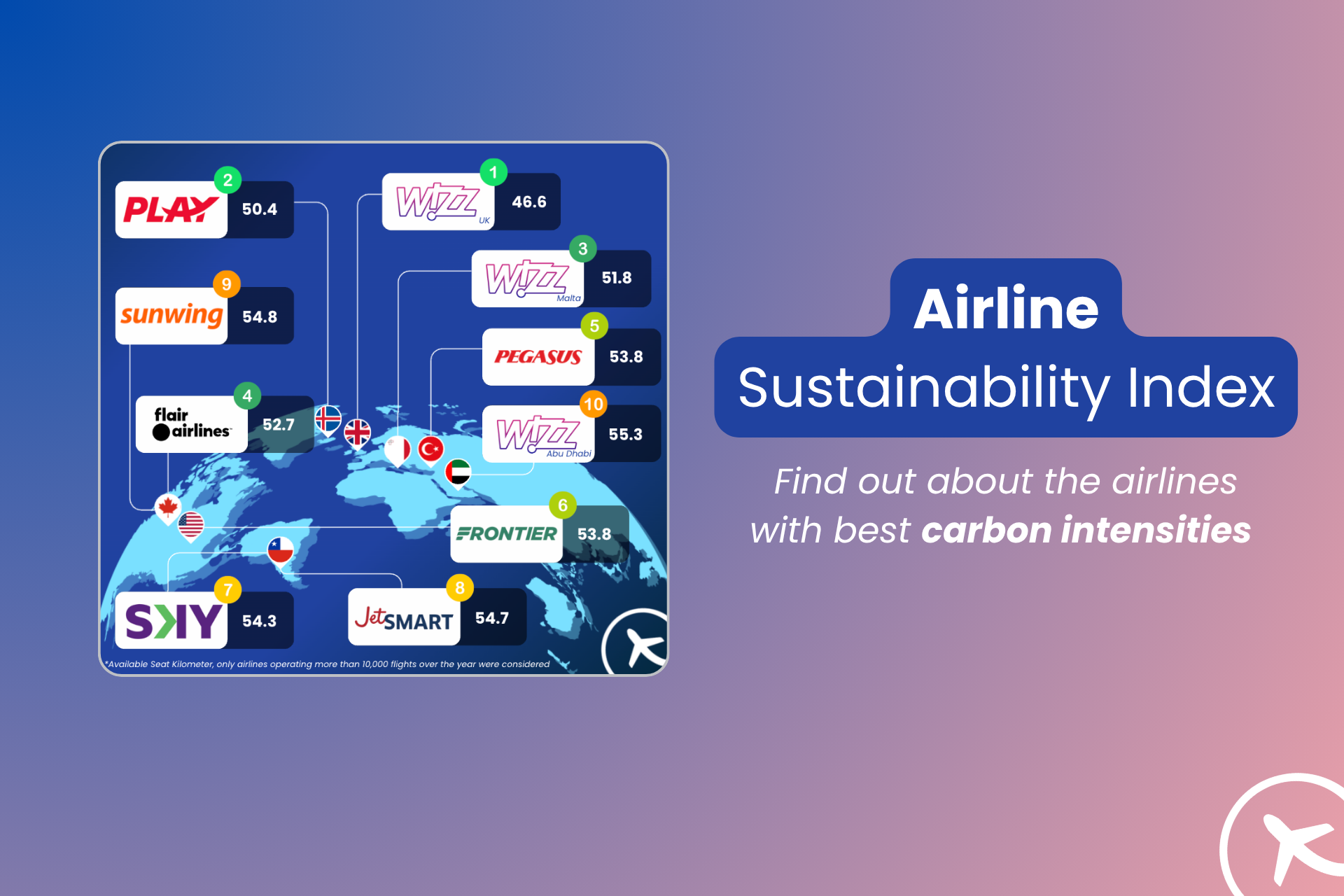Making aviation %%smarter%% and %%greener%%
Estuaire helps you reach your sustainability objectives with CO2, contrails, NOx, and aircraft lifecycle impact data.

.svg.png)









.svg.png)









.svg.png)








Powering aviation’s
climate intelligence
Each year, we analyze commercial and business aviation flight trajectories — around 40M per year — integrated with weather, aircraft, and payload data, delivering the most complete insights into the sector's environmental footprint.


Smart climate solutions tailored to your needs

Airlines
- Monitor non-CO2 effects
- Prepare for the non-CO2 MRV regulation
- Optimize flight trajectories to save fuel and reduce contrails
Airports
- Monitor scope 3 emissions from aircraft for Airport Carbon Accreditation
- Compute times in mode based on radar data for ground emissions
- Build incentive schemes for airlines to buy SAF
Aviation Finance
- Monitor financed emissions and climate alignment of aviation portfolios
- Track the sustainability performance of airlines, airports and lessors
- Comply with Pegasus Guidelines, Impact milestone concept and prepare for CSRD disclosures
Aircraft Manufacturers
- Monitor the climate impact of your in-service fleet
- Build replacement scenarios to market your product
- Prepare for climate change adaptation by monitoring extreme weather events affecting your aircraft
Unparalleled sustainability data
>99.8%
+40M
+90 000
What they think about us
Having accurate data from Estuaire will enable RIVE to develop incentives for our operators to identify sustainability levers and reduce emissions

Our partnership leverages the Estuaire global non-CO2 emissions inventory, understanding persistent contrail formation drivers for commercial aviation

Our airline customers are under stringent environmental regulations. Estuaire’s data has been instrumental in demonstrating the positioning and operational efficiency of our ATR 72-600 aircraft

The precision of the data Estuaire provides us is essential to refine our decarbonization actions and strengthen our environmental leadership.

Having accurate data from Estuaire will enable RIVE to develop incentives for our operators to identify sustainability levers and reduce emissions

Our partnership leverages the Estuaire global non-CO2 emissions inventory, understanding persistent contrail formation drivers for commercial aviation

Our airline customers are under stringent environmental regulations. Estuaire’s data has been instrumental in demonstrating the positioning and operational efficiency of our ATR 72-600 aircraft

The precision of the data Estuaire provides us is essential to refine our decarbonization actions and strengthen our environmental leadership.

Having accurate data from Estuaire will enable RIVE to develop incentives for our operators to identify sustainability levers and reduce emissions

Our partnership leverages the Estuaire global non-CO2 emissions inventory, understanding persistent contrail formation drivers for commercial aviation

Our airline customers are under stringent environmental regulations. Estuaire’s data has been instrumental in demonstrating the positioning and operational efficiency of our ATR 72-600 aircraft

The precision of the data Estuaire provides us is essential to refine our decarbonization actions and strengthen our environmental leadership.

Frequently asked questions
Condensation trails (“contrails”), ice clouds formed from aircraft engine exhaust, contribute significantly to global warming by trapping heat in the atmosphere.
Contrail warming accounts for around 35% of aviation’s climate impact, but less than 3% of total flights are deemed responsible for 80% of the total persistent warming contrail impact [source]. Thus, action can be taken on a small proportion of global flight traffic to produce savings that reduce the total climate impact of aviation.
Elements like weather, engine type, and fuel properties have impact on contrail formation
























Ready to fly?
Let's explore how Estuaire data can power your sustainability mission.


